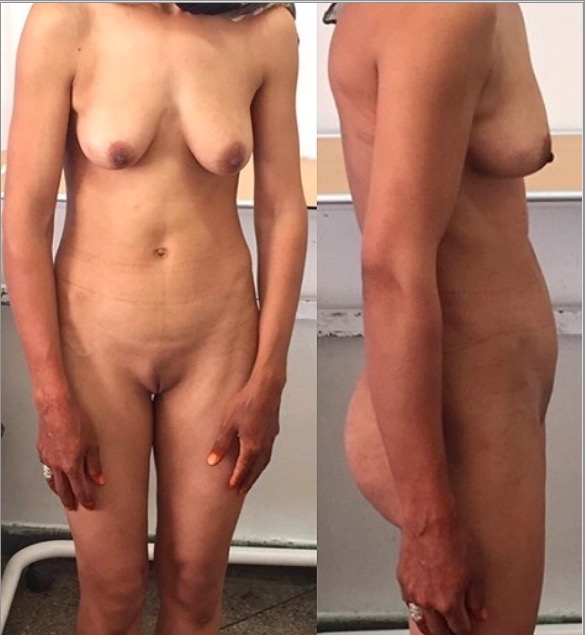Playlist
Show Playlist
Hide Playlist
46,XY Karyotype: Disorders
-
Slides 03 Chromosomal Disorders III V2.pdf
-
Download Lecture Overview
00:01 We’ll start by looking at the 46, XY karyotype that may be presenting anywhere along the spectrum from male to leaning towards female. Something has gone a little bit awry. So XY, one of the things we can have is complete dysgenesis. We see that 15% of that happens from deletion of the SRY gene which makes sense because there’s no SRY there, there’s no testis determining factor, and then no testes, and there’s no testosterone, so on and so forth. But here’s the crux is most of them actually have a normal SRY. So, it’s important to understand that the role of SRY is not the only piece of the puzzle because if SRY doesn't, actually if it has a mutation and doesn’t actually produce testis determining factor, then we’re not going to get testes, right? There could be lots of other things going on along this pathway between development of a full-on male through chromosome to external genitalia and full reproductive capacity. 01:27 We have to consider what else could be going on. One of the things I’ll highlight is our androgen insensitivity syndrome. Androgen insensitivity syndrome could arise if let’s say we do have a functional SRY gene and it does produce testis determining factor that turns the primordial gonad into a testis and the testis manages to secrete testosterone, right? We have a lot of steps along the way clearly that things could go awry. 02:05 But here, even if testosterone is made, that testosterone may not actually have an effect at the target site. 02:16 So, androgen insensitivity syndrome is one of the most common situations in which we have a mismatch between XY karyotype and the XY phenotype or a mismatch of that. There are two versions of that. 02:37 There’s complete androgen insensitivity syndrome which is completely insensitive. Then there’s partial androgen insensitivity syndrome which would mean that testosterone may be able to have some effect. 02:54 This is because in androgen insensitivity syndrome, testosterone can be converted to DHT. 02:56 The problem here is: There is a varying degree of end-organ insensitivity to androgens. 03:03 This is due to mutation of the gene locus encoding the androgen receptor. 03:07 Now, there’s a really interesting story that I’ll never forget from my first college biology class. 03:15 A lot of these disorders that we’ll get into later are ones that you probably have heard of before but we’re highlighting them here so that you can be sure to remember them for your exams. 03:26 But I remember the story about a condition called guevedoce which means literally eggs at 12, where it would be 5-alpha-reductase deficiency. It was very common for this syndrome to exist in one particular region of the world. I can’t quite remember where it is but I want to say, no, I’m not even going to say it because I might not get it right. But I’m just remembering the story of boys are growing up or the girls are growing up as little girls, running around and doing the things that they do. It was considered completely normal in this culture at 12 for girls to sometimes turn into boys. 04:09 This has to do with 5-alpha-reductase deficiency. 04:13 So, it has a much milder effect. 04:17 And there’s enough testosterone only at puberty when there’s another burst of testosterone production to actually spur the full development of male external genitalia. 04:29 Of course, they would have hypospadias and some other abnormalities. But at their puberty time, they would become much more male. I always imagine how difficult it was to go through puberty, anyway. 04:44 Then have to go through puberty and change from a girl to a boy could be an entirely different situation. 04:51 But that would be an example of a 5-alpha-reductase deficiency versus complete androgen insensitivity where you actually don’t get the development of male external genitalia at all. Testes happen, testosterone happens but actually no end product of external genitalia of being male. 05:15 There are a couple of famous examples of androgen insensitivity people. They tend to just be taller and leaner but are most definitely, definitely female.
About the Lecture
The lecture 46,XY Karyotype: Disorders by Georgina Cornwall, PhD is from the course Chromosomal Disorders.
Included Quiz Questions
Which of the following is likely to yield ambiguous external genitalia in an XY individual with a normal sex-determining region Y?
- Partial androgen insensitivity syndrome
- Complete androgen insensitivity syndrome
- Turner syndrome
- Klinefelter syndrome
- Congenital adrenal hyperplasia
Which of the following conditions follows an autosomal recessive inheritance pattern and causes a female phenotype in an XY individual before puberty with virilization at puberty?
- 5-alpha-reductase deficiency
- Complete androgen insensitivity syndrome
- Congenital adrenal hyperplasia
- Klinefelter syndrome
- Turner syndrome
Which of the following phenotypes best corresponds to complete androgen insensitivity syndrome?
- Female external genitalia in the presence of testes and testosterone production
- Female external genitalia with absent testes despite testosterone production
- Male external genitalia with testes and testosterone production
- Male external genitalia with absent testes despite testosterone production
- Female external genitalia without testes or testosterone production
Approximately what percentage of 46XY complete gonadal dysgenesis is due to deletion of sex-determining region Y?
- 15%
- 20%
- 35%
- 60%
- 85%
Customer reviews
5,0 of 5 stars
| 5 Stars |
|
5 |
| 4 Stars |
|
0 |
| 3 Stars |
|
0 |
| 2 Stars |
|
0 |
| 1 Star |
|
0 |






